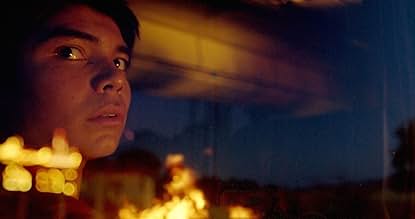Review: "Sujo"
- Jennifer Green

- Nov 24, 2024
- 3 min read
Updated: Dec 1, 2024
In a time when immigrants from south of the border are being vilified in the US, a film like Sujo offers a poignant rendering of the brutality which forces some people to flee their homes. From writing-directing team Astrid Rondero and Fernanda Valadez and a female-dominant creative and technical crew, the film won the Grand Jury Prize at Sundance and was selected to represent Mexico in this year’s International Oscar category.
Sujo is a tense film full of visual symbolism that takes an unexpected turn in its third act. The main character is a boy who survives and ultimately gets a chance at life only because of three women who intervene at key moments to save him.
As a small child, Sujo is found abandoned in a car. His beloved father, a sicario, has been killed. His aunts hide him away and negotiate with men who want the child dead. He’ll grow up to bring them trouble, they say. They know this because there’s no other path for boys and men in this rural area of Michoacan named, appropriately, Tierra Caliente.
Sujo’s aunt, Nemesio, promises to keep the boy hidden away from the town, ruled over by the cartel. He’s raised alongside his cousins, Jai and Jeremy. Though he misses his father, and he’s raised in poverty, he is well cared for and loved by his aunts. As the boys grow, however, they begin to push their boundaries, eventually and inevitably getting involved with the cartel (each is branded with a large, tattooed number in the gang on his chest).
When Jeremy is killed, Nemesio rushes Sujo onto a bus bound for Mexico City and tells him never to return. This is where the film takes an unexpected turn. Now college-aged, Sujo begins to make a life for himself in the city. He finds work unloading produce at a warehouse. One day he wanders into a college class, and the professor takes him under her wing. When Jai comes to town, the violence and rage of his past life revisits him, threatening to upset the balance and future Sujo is slowly shaping.
The two parts of the film have very different looks and feels. The first two acts construct a portrayal of a bucolic rural area infested with violence. An opening scene shows a horse escaping a rural rodeo. The horse gallops across a flat landscape, a location we will see again and again as people escape violent men, running in one direction or another.
The horse has more symbolism than we realize until the end of the movie, and it’s just one of many wild animals DP Ximena Amann’s camera captures. There seems to be a constant barking, bleating, howling, hooting or neighing heard in the distance and through the fog of these lands, reminding us both of the persistence of the natural world and of the dangers lurking everywhere here.
When Sujo settles into the city, the animals disappear, replaced by other dangers. But the dread seems to have disappeared as well. Without it, Sujo is able to get on with the business of living. He has work, a small room in a shared building, and intellectual stimulation in the form of the literature class and books his teacher loans him.
He doesn’t need much, but how different his life and his future feel here versus in his dead-end village, representative of so many like it (the number “43” painted on a wall at the university, referring to a group of male college students abducted and killed in 2014, reminds us of this).
The women of this story are the caretakers, giving the boys at least a chance at a manhood free from crime and violence. Nemesio even has some powers of divination which help her save Sujo’s life on more than one occasion. In the city, the professor takes over. Though she has plenty of reason not to, she takes Sujo under her wing, shepherding him through the university system.
A final scene suggests the promise of a real future for Sujo, once again at the protective hand of a woman who sees not just that he has potential, but that he – like all children, no matter where they’re born – is deserving of the opportunity to live in peace. Despite the darkness in this film, it comes as a relief when it ends on this hopeful note, even if we know for every Sujo there are more Jai’s and Jeremy’s who don’t make it out.
Review originally published at AWFJ.org
Images courtesy of The Forge




Comments